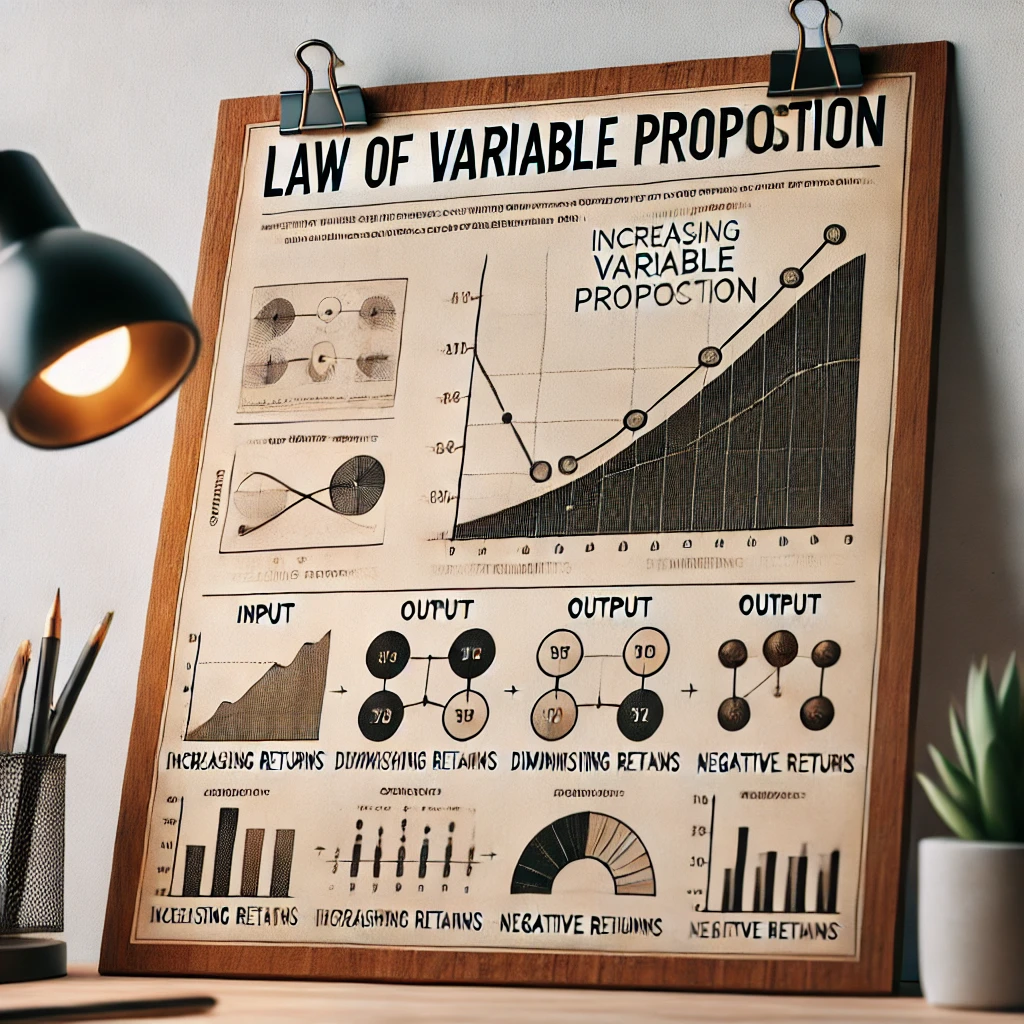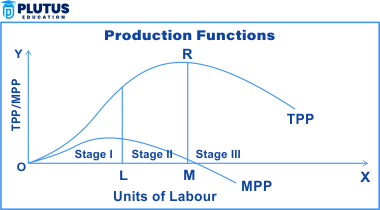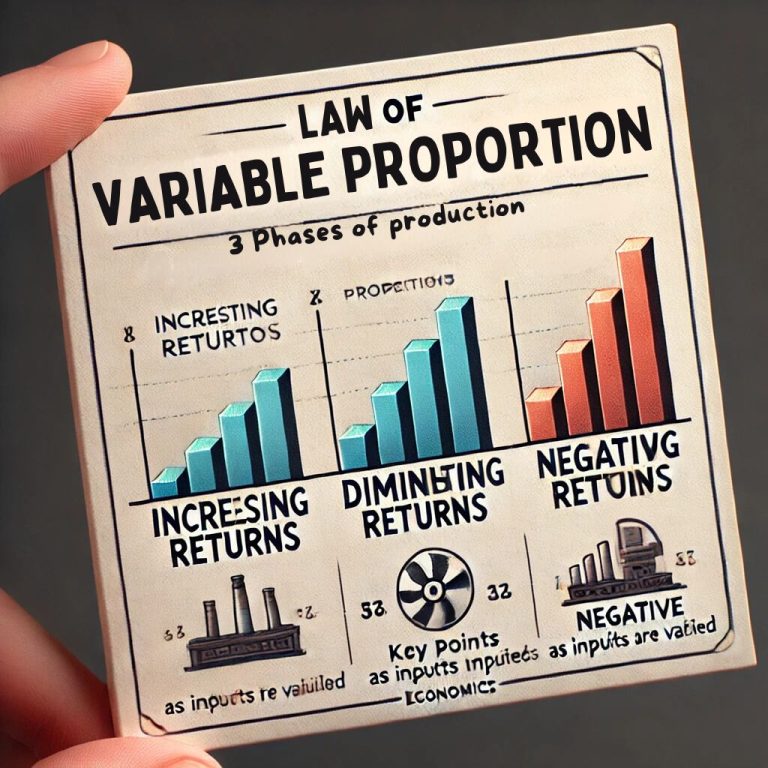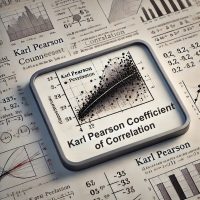The Law of Variable Proportion is that aspect of economics that explains how output varies if the quantity of one variable factor is increased while other variable factors are kept constant. To understand the input/output relationship in production, especially in the short run, this law throws light upon the way by which the marginal productivity of an input will vary as more and more of it is used, eventually coming to the stage where a law of diminishing returns operates.
The Law of Variable Proportion is one of the most important phenomena in production theory. It describes well the short-run production process, wherein at least one factor of production is assumed to be fixed. The law explains how the output of a product changes when the quantity of one variable input is increased while other inputs are kept constant. The Law of Variable Proportion, or Returns to Factor states that the increasing units of a variable factor such as labor added with fixed factors like machinery will increase total output at an increasing rate, then at a diminishing rate, and eventually may decline. Such a concept forms the very foundation on which firms decide the optimal mix of inputs to maximize productivity and minimize costs.
What is Law of Variable Proportion?
The Law of Variable Proportion, also known as Return to Factor, states that in the short run when all the quantities of one or more factors of production are given and only one factor changes, the total output grows non-proportionately with a rise in the variable factor. This law acts within three different stages: increasing returns, diminishing returns, and negative returns.
- Phase I: Increasing Returns to Factor
- Phase II: Diminishing Returns to Factor
- Phase III: Negative Returns to Factor
Importance of Law of Variable Proportion
The Law of Variable Proportion is critical in economic decision-making for producers and firms. It helps in:
- Optimal Resource Allocation: Awareness of how the returns begin to diminish helps businesses determine the optimal level of input usage.
- Cost Management: Knowing how output varies with changes in inputs helps firms control their cost of production effectively.
- Production Planning: This law assists firms in forecasting how expansion in labor, raw materials, and other inputs will affect their output levels in the short run.

Statement of the Law of Variable Proportion
The Law of Variable Proportion can be stated as:
“As more and more units of a variable factor are combined with fixed factors of production, the total product will initially increase at an increasing rate, then at a diminishing rate, and eventually may decline.”
This law depicts the stages of production and is further applied in short-run production. It further depicts that after a certain point, more units of the variable input produce progressively smaller increases in output, which bring about inefficiencies.
Assumptions of Law of Variable Proportion
For the Law of Variable Proportion to hold, several key assumptions must be met:
- Fixed Proportions of Some Inputs: The theory only applies in the short run and where at least one input, capitalized or land, is fixed.
- Homogeneous Variable Input: The variable input, say labor, is homogeneous. In other words, every marginal unit of the variable factor must be equally productive
- Technology Constant: The technology employed in the production process is taken to be constant, not to vary with the course of the process.
- Divisibility of Inputs: Inputs are variable as well as divisible. Variable input can be added in smaller units.
Phases of Law of Variable Proportion
The Law of Variable Proportion operates in three distinct phases, each representing a different relationship between input and output. Let’s explore each phase:
Phase I: Increasing Returns to Factor (TP increases at an increasing rate)
In the initial phase, by increasing more units of the variable factor, TP increases in more than one-for-one proportion due to fixed factors not being fully utilized and being highly complemented by the variable factor. Therefore, the MP and AP of the variable factor increase.
Phase II: Diminishing Returns to Factor (TP increases at a decreasing rate)
More units of the variable input used to increase output but at a decreasing rate. If this were a phase, the marginal product would decline because the fixed inputs have now become limiting. It is during such a phase that the Law of Diminishing Marginal Returns kicks in.
Phase III: Negative Returns to Factor (TP falls)
In the third stage of activity, more units of the variable input will cause the total product to decline. The company in this period now faces negative marginal returns since additional inputs reduce total efficiency.

Reasons for Variable Proportion
The Law of Variable Proportion occurs due to several factors:
- Optimal Utilization of Fixed Inputs: In the growth or development stage, fixed factors, including land or capital are utilized not fully. Greater variable inputs result in better use of fixed factors that cause increasing returns.
- Indivisibility of Fixed Factors: Fixed factors cannot be employed in variable units less than a specific quantity, and this causes inefficiency when variable inputs are increased beyond certain limits.
- Limited Substitutability between Variable and Fixed Inputs: In the short run, substitutability between variable inputs and fixed inputs is limited which leads to diminishing and then negative returns.
- Overcrowding: When the level of variable input is high, too many workers or machines may be crowded at the available fixed inputs which would increase inefficiency along with negative returns.
Conclusion
The Law of Variable Proportions explains in words the short-run relationship between variable inputs and output. It describes how output increases rapidly at first but very slowly toward the end while producing the least unit of output after more of the variable factor is added to fixed inputs. This law is very crucial for understanding the process of short-run production and assists firms in finding the efficient use of their inputs. A point can be identified using this where the firm is experiencing a diminishing return; therefore, a business can better allocate resources, consider a suitable production scale, and better manage its cost.
Law of Variable Proportion FAQs
What is the Law of Variable Proportion?
The Law of Variable Proportion states that as more of one input is increased while keeping other inputs constant, the output increases at first at an increasing rate, then at a diminishing rate, and finally may decrease.
What is the importance of the Law of Variable Proportion?
This law helps firms optimize their resource allocation, manage production costs, and plan efficient production levels in the short run.
What are the assumptions of the Law of Variable Proportion?
The key assumptions are: fixed inputs, homogeneous variable inputs, constant technology, and divisible inputs.
What are the phases of the Law of Variable Proportion?
The phases include: increasing returns to a factor, diminishing returns to a factor, and negative returns to a factor.
Why does diminishing returns occur?
Diminishing returns occur due to the limited ability of fixed inputs to complement increasing variable inputs after a certain point.

